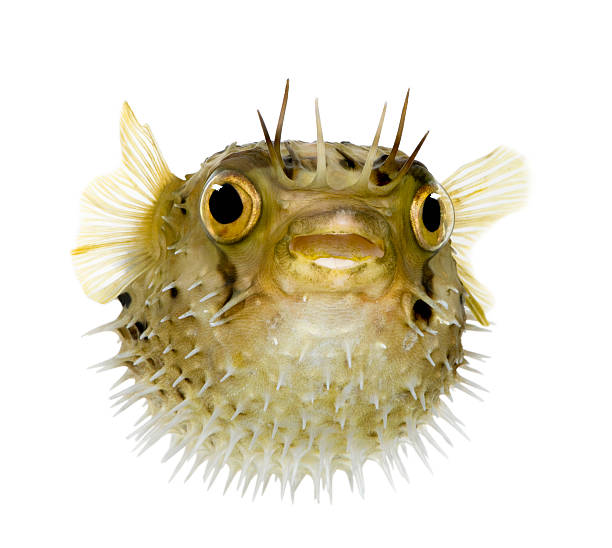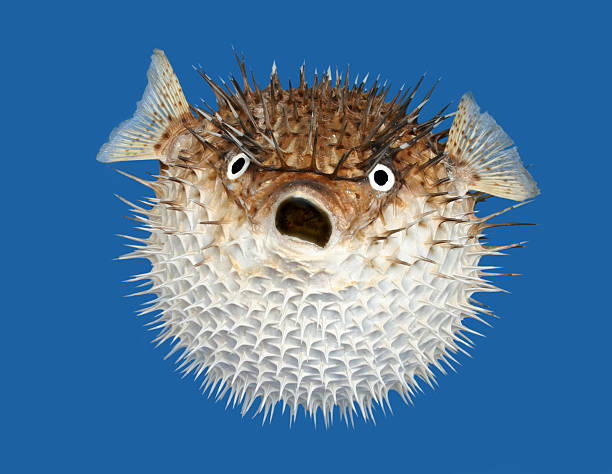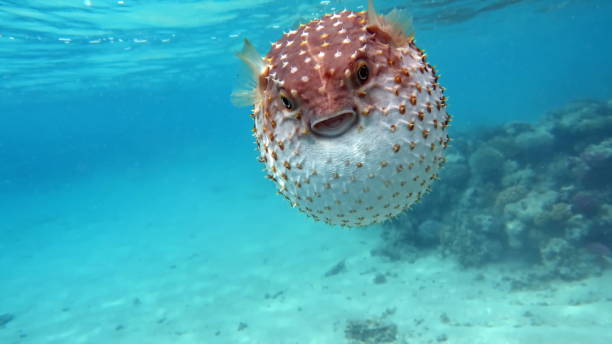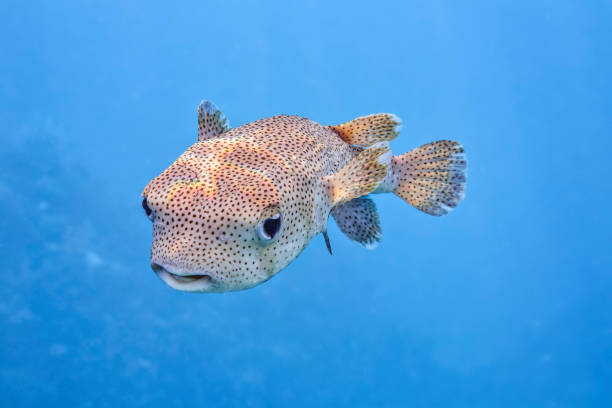Is Blobfish Regarded As One Of The World’s Ugliest Animal?

The Blobfish and Beuty
The Blobfish, a gelatinous and peculiar creature that inhabits the depths of the ocean, has gained worldwide notoriety for being regarded as one of the world’s ugliest animals. While its appearance is undoubtedly unique, it is worth examining whether this reputation is fair or merely a result of our biased perception of beauty. This article discusses about the reasons why the Blobfish has come to be regarded as unattractive, highlight its biological adaptations for survival, and ultimately question the validity of labeling it as one of the world’s ugliest animals.
To begin with, the Blob fish’s appearance is, undeniably, far from conventionally appealing. It has a squishy and loose body that appears melted and saggy. With a large gelatinous head, beady eyes, and a wide, frowning mouth, it has all the characteristics that might repulse human observers. Additionally, its gelatinous skin and sagging features might give the impression that it lacks vitality and liveliness. This visual contrast to the vibrant colors and elegant forms that we often associate with beauty in the animal kingdom contributes to the Blob fish’s unflattering reputation.
However, it is important to note that the Blob fish’s grotesque appearance is a result of its natural habitat. Living at depths of up to 4,000 feet below the surface, where the immense pressure is approximately 120 times stronger than at sea level, the Blob fish has evolved to adapt to its extreme environment. Its gelatinous, jelly-like body enables it to survive under these high-pressure conditions, as it lacks any internal structure that would be compressed. In its natural habitat, the Blob fish’s appearance becomes less grotesque and more practical for its survival, which raises questions about our perception of beauty being influenced by our own living conditions.
Another noteworthy aspect is the Blob fish’s impressive reproductive adaptations. It can produce thousands of eggs, which it carries in a mass of gelatinous tissue. The high water pressure at those depths allows the eggs to remain buoyant without the need for a protective shell, promoting the chances of their survival. While these adaptations may not directly influence our aesthetic preferences, they emphasize the Blob fish’s remarkable ability to adapt and thrive in its unique environment.
Furthermore, beauty is subjective, and our perception is inherently influenced by cultural and societal standards. The Blob fish, which was not commonly known until recent years, has suddenly become an internet sensation due to its unorthodox appearance. Memes and internet jokes have perpetuated the image of the Blob fish as ugly, influencing public perception. This raises the question of whether our judgments are genuinely objective or simply driven by the power of mass opinion.
Moreover, the Blob fish is not alone in being labeled as ugly in the animal kingdom. Animals such as the naked mole rat, the proboscis monkey, and the star-nosed mole all have unique physical attributes that some might find unattractive. However, these animals have their own evolutionary adaptations and purposes, making it futile to judge them solely based on human aesthetics.
Which Is The World’s largest Animal Existing Today?
The world is home to countless species of animals, ranging from the tiniest insects to massive marine creatures. Among them, there is one animal that stands out for its sheer size and grandeur. The blue whale (Balaenoptera musculus) is the largest animal existing today and holds the record for being the largest animal that has ever lived on Earth.
With an average length of 82 to 105 feet and an estimated weight of 100 to 150 metric tons, the blue whale dwarfs every other living organism on the planet. Its size can be more easily comprehended when one considers that even its tongue alone weighs as much as an elephant, and its heart is roughly the size of a small car. To put it into perspective, a single blue whale can fit more than 80 people in its mouth.
The blue whale’s size is matched by its incredible feeding habits. These gentle giants are classified as baleen whales, meaning they have baleen plates instead of teeth, which they use to filter their main source of food—krill—from the ocean water. Despite their massive size, they subsist primarily on these tiny shrimp-like organisms, consuming up to 4 tons of krill per day during peak feeding seasons.
Their incredible size and feeding habits make the blue whale a unique and awe-inspiring creature. They can be found in all major oceans and have a migratory pattern that spans great distances. They often travel in small groups called pods and are known for their distinct songs, which can be heard underwater for miles. These songs are believed to be a form of communication between individuals and may play a role in mating and socializing.
Sadly, despite their remarkable size and cultural value, blue whales have faced severe threats in recent centuries. The whaling industry, fueled by the demand for their blubber and oil, led to a significant decline in their population. Throughout the 20th century, it was estimated that about 360,000 blue whales were killed. Consequently, these magnificent creatures became endangered, and their population dropped to an alarming level.
In response to the threat of extinction, various international agreements and conservation efforts were put in place to protect blue whales. The International Whaling Commission banned commercial whaling in 1986, leading to a partial recovery of their population. Today, blue whales are protected by various laws and regulations, and their numbers have increased to approximately 10,000 worldwide.
The blue whale’s resilience and remarkable size make it an emblematic species for global conservation efforts. Its role as an apex predator also highlights the crucial role these majestic animals play in maintaining the balance of marine ecosystems. By ensuring the protection of the blue whale and its habitat, we can preserve not only a symbol of natural wonder but also the biodiversity and health of our oceans.
The world’s largest animal existing today is unquestionably the blue whale. With its colossal size, distinct feeding habits, and significant conservation efforts, this magnificent creature truly captures the imagination of people worldwide. By understanding and valuing the blue whale, we can be inspired to protect and conserve all species and ecosystems, ensuring their continued existence for generations to come.

Did Dinosaurs Really Exist How Large Were They?
Dinosaurs, these gigantic and mesmerizing creatures, have captured the curiosity and imagination of people for centuries. While there are no living creatures that resemble dinosaurs, the evidence of their existence is overwhelming. Paleontologists, scientists who study fossils, have spent countless hours piecing together the puzzle of the past to understand the truth about dinosaurs. Fossil records, coupled with extensive scientific research, have provided us with a wealth of knowledge regarding these prehistoric beings and their incredible size.
The existence of dinosaurs is supported by an abundance of fossil evidence. Fossils, preserved remains or impressions of past living organisms, have been discovered on every continent, providing a substantial basis for their existence. These fossils range from complete skeletons to fragments of bones and teeth. Over time, paleontologists have amassed an extensive collection of dinosaur fossils, allowing them to classify various species and reconstruct their physical appearance. The sheer number of fossils speaks volumes, attesting to the existence of dinosaurs.
Just how large were these prehistoric giants? Dinosaurs came in all shapes and sizes, with some being relatively small, while others were massive. Among the largest dinosaurs found thus far is the Argentinosaurus, estimated to measure around 100 feet long and weighing in at a staggering 80 to 100 tons. Another well-known giant is the Brachiosaurus, which reached lengths of approximately 85 feet and weighed around 80 tons. These colossal creatures were the true heavyweights of the dinosaur world.
However, not all dinosaurs were colossal. Some species were diminutive in size, comparable to modern-day birds. The Compsognathus, for example, reached lengths of just 40 inches and weighed a mere 6 pounds. Similarly, the Microraptor was a pint-sized predator, measuring approximately 20 inches long and weighing only 2 pounds. Thus, while some dinosaurs were massive, others were surprisingly small.
The size of dinosaurs varied not only between species but also within species. Adult dinosaurs tended to be larger than their offspring, like many other modern animals. Additionally, the size of dinosaurs differed for various reasons, including adaptation to their environment and evolutionary factors. It is believed that dinosaurs evolved from smaller, less impressive creatures, and gradually increased in size over millions of years.
But how do scientists determine the size of dinosaurs? Paleontologists employ various methods to estimate the size of these ancient creatures. One method is by analyzing fossils and comparing them to modern-day animals with similar bone structures. By making these comparisons, scientists can estimate the size of various body parts and then reconstruct the overall size of the dinosaur. Other methods include utilizing computer models and 3D reconstructions based on fossil evidence. These innovative techniques have greatly enhanced our understanding of dinosaur size.
Dinosaurs undoubtedly existed, and their colossal size is well-documented. The abundance of fossils found worldwide provides overwhelming evidence of their presence in the ancient world. Giants like the Argentinosaurus and Brachiosaurus truly astound us with their immense size, while smaller species like Compsognathus and Microraptor remind us of the diverse range of dinosaur sizes. The methods used by paleontologists to estimate dinosaur size have paved the way for groundbreaking discoveries and a deeper understanding of these magnificent creatures. Dinosaurs were indeed real, and their size continues to astonish and captivate the human imagination.

Conclusion on Blobfish
In conclusion, the Blobfish has undeniably gained a reputation as one of the world’s ugliest animals primarily due to its unconventional appearance. However, upon closer examination, it becomes apparent that its appearance is a result of biological adaptations to its deep-sea habitat. Our perception of beauty is subjective and influenced by societal norms, which raises questions about whether it is fair to label the Blob fish – or any animal – as ugly based solely on human aesthetics. Ultimately, the Blob fish deserves appreciation for its ability to survive and thrive in a harsh and unforgiving environment rather than being reduced to a mere claim to ugliness.

1 thought on “Is Blobfish Regarded As One Of The World’s Ugliest Animal?”